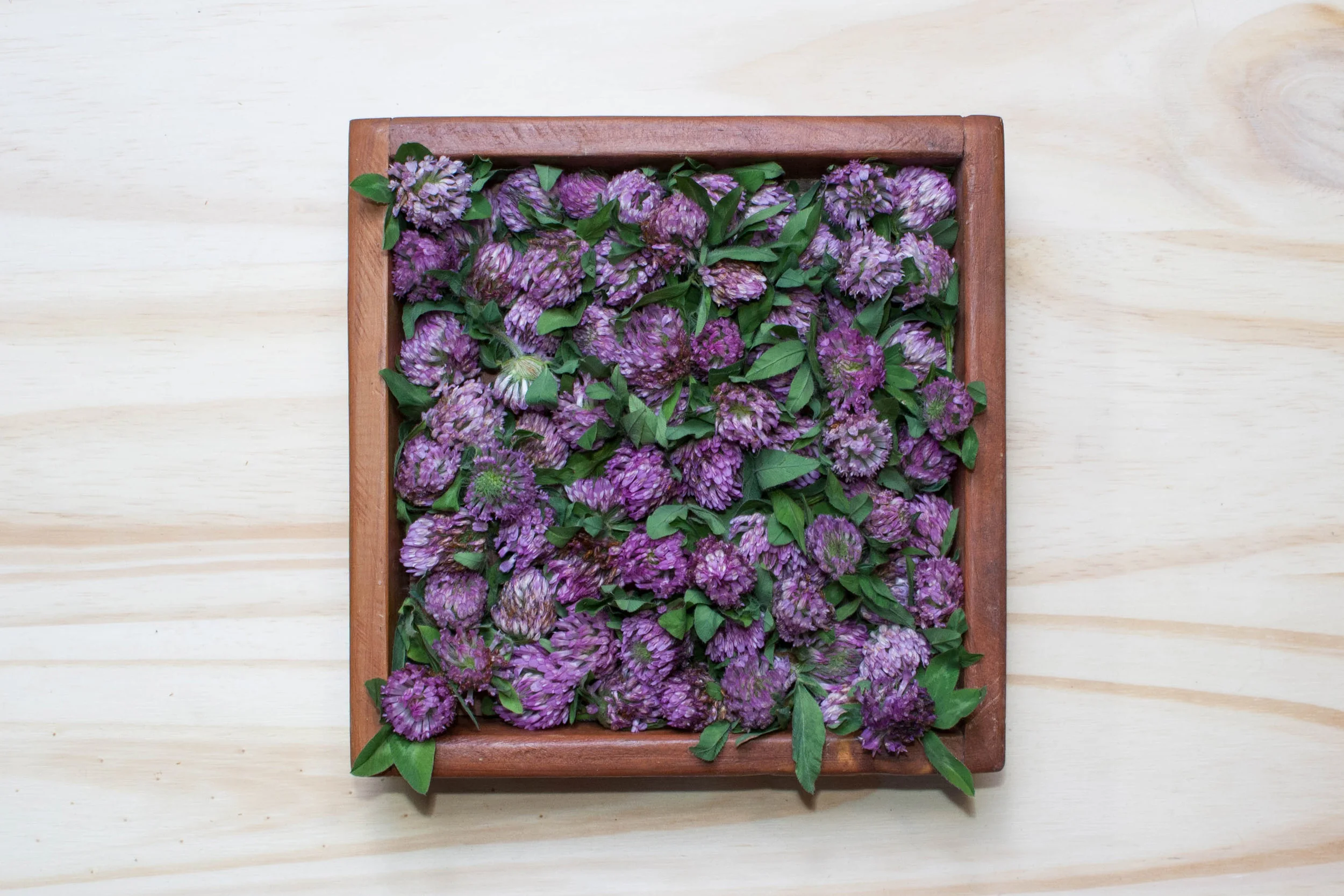Red Clover
Red Clover, trifolium pratense is one of many essential herbs supportive to women’s health. It's constituents provide rich sources of plant based water soluble estrogen, known as phytoestrogens. Highly rich in isoflavones, it aids in replenishing estrogen. It is considered a legume and is a member of the Fabaceae family. Found commonly growing in fields, meadows, lawns, and along most roadsides, the blossoms' vibrant magenta glow makes this beauty hard to miss. Luckily it blooms twice a season providing plentiful amounts of phytoestrogen nutrients. The flowers are rich in tannins and flavonoids giving complimentary notes of a sweet, yet puckered taste. Red Clover is one of the main ingredients in Women's Wellness; helping to strengthen the ovaries, breasts and general reproductive health. Incorporating this fortifying nutritious plant into your life is incredibly beneficial. It lessens the chance of osteoporosis, helps improve memory, hot flashes and even relieves burns when applied topically.
Supporting Research
Clifton-bligh PB, Baber RJ, Fulcher GR, Nery ML, Moreton T. The effect of isoflavones extracted from red clover (Rimostil) on lipid and bone metabolism. Menopause. 2001;8(4):259-65.
Powles TJ, Howell A, Evans DG, et al. Red clover isoflavones are safe and well tolerated in women with a family history of breast cancer. Menopause Int. 2008;14(1):6-12.
Ghazanfarpour M, Sadeghi R, Roudsari RL, Khorsand I, Khadivzadeh T, Muoio B. Red clover for treatment of hot flashes and menopausal symptoms: A systematic review and meta-analysis. J Obstet Gynaecol. 2016;36(3):301-11.
Zhou R, Xu L, Ye M, Liao M, Du H, Chen H. Formononetin inhibits migration and invasion of MDA-MB-231 and 4T1 breast cancer cells by suppressing MMP-2 and MMP-9 through PI3K/AKT signaling pathways. Horm Metab Res. 2014;46(11):753-60.




